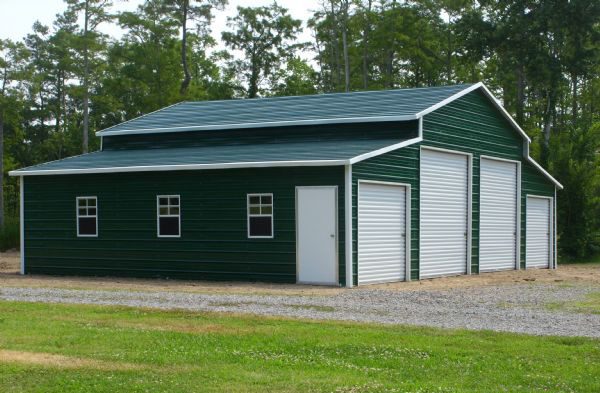For centuries, barns have been a critical element of homesteads, particularly in agricultural communities. As uses for barns have changed, so too have the styles of barns and the materials used to build them. Until recently, wood was the most popular barn construction material. Today, however, metal barns are becoming increasingly popular because they cost less and require little maintenance. No matter the material, before buying a barn, there are essential things to consider to ensure the barn meets both needs and budgets.
Check What Permits You Need
Barns are great for storage, which is why they’ve become popular even in nonagricultural neighborhoods. However, not every municipality will permit barns on nonagricultural properties.
In almost all municipalities, installing a barn or even a shed requires a permit. When buying a barn, make sure you check with your municipality first. Some will allow you to install barn storage, but only if the property is of a specific size. Before you make a barn purchase, it’s best to know which types of barns are allowed and what permits are required to save you any headaches.
How You Plan to Use Your Barn
When you make an investment in a big purchase like a barn, you likely already know what you want to use it for. But knowing how the barn will exactly be used will help you to determine what size, type, and barn features will be needed.
For example, if the barn is simply for equipment or storage, hooking it up to water and electricity may not be necessary. However, if you plan to use the barn as a home for people or animals, it will need to have a few more features to provide proper comfort and safety.
Farming Storage
If you plan to use the barn for storing farm equipment, plan out how much space you might need and make sure to add extra as storage needs tend to expand over time. If the barn is going to be a workshop or to house farm animals, then it will need both electricity and plumbing. It will also need more than one entrance and exit, as well as windows and proper ventilation.
By themselves, barns provide shelter from rain and wind. However, if they are going to be comfortable and safe to use in the cold of winter and heat of summer, they need to be insulated and possibly even outfitted with an HVAC system. Space heaters, though inexpensive, are dangerous fire hazards for humans and livestock.
For more information about barn features that livestock would need, check out U. S. Department of Agriculture’s Animal Welfare Standards and Guidelines. For tips on housing horses in barns, you can read more on our blog “7 Winter Tips for Horse Health and Safety.” And, for barn fire prevention tips to consider when planning a barn, check out the Humane Society of the United States’ website.
Metal vs. Wood
After deciding the barn’s purpose and size, the next decision is whether to go with a traditional wood pole barn or a less expensive metal barn. An important factor in this decision would be the local climate.
Water can cause wood structures to rot, and insects can cause tremendous damage. To prevent damage from both of these environmental threats, wooden barns need to be treated and waterproofed annually. However, because of the high-grade steel and special coatings used on metal barns, water won’t rot or rust them, and insects won’t damage them.
You should consider rainfall and flooding events when deciding the placement of your barn, as well as a construction material. Ideally, barns should be placed on higher ground, or at least in an area that drains well. This is especially important if the barn will house livestock or expensive equipment. Typical wooden pole barns often have dirt floors, which can erode during floods or even torrential rains. However, metal barns can have crushed stone or cement flooring, which is impervious to water damage.
Heavy snowfall and strong winds are other factors to consider before buying a barn. Barns in areas that experience either need to be constructed to withstand them. Wooden barns have peaked roofs that can shed heavy snow. Modern metal barns can do the same. When properly secured, metal barns made from high-quality steel can even withstand winds from category three hurricanes.
Sadly, in every climate, barn fires are common. They are most often started when hay gets too hot and spontaneously combusts, when stored equipment leaks gasoline or other flammable liquid, when rodents chew electric wires, and when space heaters or lamps overheat. Wood barns are combustible, but metal barns are not. Fires can happen in both, but metal barns won’t burn down.
Proper Maintenance
Both metal and wood barns look great when new. However, they differ significantly in the required maintenance. Wood barns need to be painted or stained regularly and will need to have a new roof installed every 20 years. In contrast, metal barns can go many years without being repainted, and the roof will last the life of the barn.
Buying a barn is an investment that will last decades. For help deciding on the best barn for any property, purpose, or budget, check out the barn options available from Newmart Builders.


